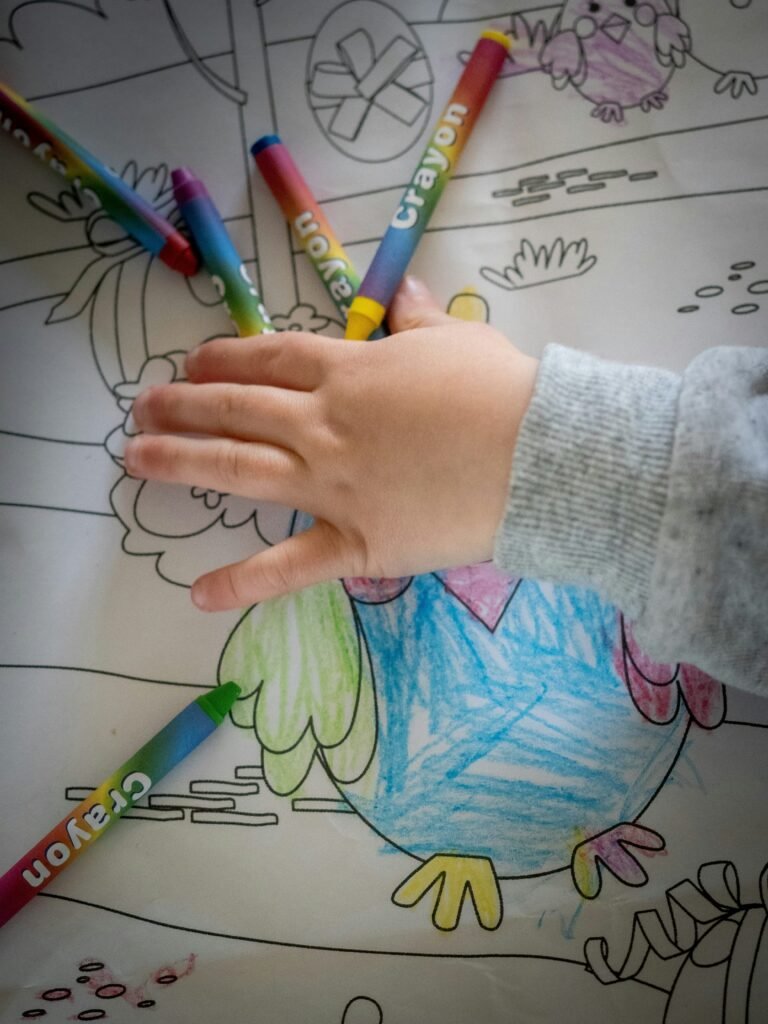A gentle guide for moms who want structure… without losing their sanity
Let’s be honest: toddlers are a whole universe by themselves.
Some mornings they wake up laughing, other mornings they cry because their sock “looked at them weird.” They’re sweet, chaotic, curious, dramatic, and absolutely exhausting — all before 9 AM.
And as moms, we do our best to keep up. But even when we think we’ve figured them out, they switch things up again. That’s why I don’t believe in “perfect schedules.” What toddlers really respond to isn’t the exact time you do things — it’s the flow of the day. A rhythm. A pattern. A soft routine that gives them security without boxing you in.
This article is here to help you create exactly that:
A daily rhythm for toddlers aged 1 to 3 — flexible, comforting, realistic, and actually doable in real life.
Grab a coffee (or reheat it for the third time ), and let’s dive in.

Why Toddlers Thrive on Rhythm (Not Strict Schedules)
Toddlers don’t care what time it is.
They don’t know what “in 20 minutes” means.
But they do understand:
- first we eat
- then we play
- then we nap
This order — the sequence — calms them.
Predictability makes them feel safe. They cope with transitions better, they trust the flow of their day, and they learn what to expect.
Here’s the truth no one says enough:
You don’t need perfection. You just need consistency.
And you don’t need a military schedule. You need cues.
A gentle routine helps YOU too, because you’re not constantly guessing, reacting, and trying to invent the day as it unfolds.
But please remember:
Some days your toddler will nap beautifully.
Some days they will crumble into tears because their banana broke.
Some days screens will save your life.
Some days the routine will fly straight out the window — and that’s normal.
You’re doing your best. And that’s more than enough.
Sample Daily Rhythm for Toddlers (Ages 1–3)
I’m calling this a rhythm because I don’t want you to feel pressure. Move things around, adjust, skip, adapt. Every child is unique.
This routine works whether you stay home, work from home, or mix in outings.
7:00 AM – Wake Up + Breakfast
Some toddlers wake up like sunshine.
Others need 20 minutes of cuddles before they can even function.
Either way, start the day slowly if you can:
a soft greeting, a little hug, a calm tone.
It sets the mood for the whole morning.
Breakfast can be simple: fruit, yogurt, oats, toast, scrambled eggs — whatever works.
Tip: toddlers love choices, but not too many.
“Banana or strawberries?” works way better than “What do you want?”
8:00 AM – Independent Play / Creative Play
This is the golden hour (if you’re lucky ).
Let them explore:
- blocks
- puzzles
- pretend kitchen
- books
- coloring
- cars
- dolls
Try rotating toys weekly — it keeps things exciting without buying new stuff.
If you need to get ready, this is usually the most peaceful time of the morning.

9:30 AM – Snack + Outdoor Time
Fresh air is magic for toddlers.
A walk, the garden, the balcony — anything counts.
If you can, let them move:
running, climbing, touching leaves, throwing tiny rocks, looking at cars.
Movement = better naps + fewer meltdowns.
11:30 AM – Lunch
Keep it simple. Toddlers eat based on mood.
One day they devour everything.
Next day they eat one pea and declare themselves done.
Offer what you have, keep calm, and don’t turn meals into battles. Toddlers eat better when pressure disappears.
12:00 PM – Storytime / Calm Play
This is the transition that prepares their body for rest.
You can do:
- a few books
- dim lights
- cuddles
- soft music
- quiet toys
Avoid screens right before nap — it overstimulates them.
12:30–1:00 PM – Nap
Depending on age, naps vary:
- 12–18 months → 1–2 naps
- 18–24 months → 1 long nap
- 2–3 years → 1 nap… or beginning to fight it
If your toddler is transitioning away from naps, introduce quiet time:
books, soft toys, relaxing music.
They don’t have to sleep — just rest.
2:00–3:00 PM – Wake Up + Snack
After nap, toddlers can be… fragile.
Give them a soft landing back into the world:
- a cuddle
- slow snack
- gentle talk
- calm atmosphere
Avoid rushing them — it helps their mood tremendously.
3:00 PM – Sensory Play
This is where toddlers thrive.
Sensory activities don’t need to be complicated:
- water play
- rice in a bin
- pom-pom sorting
- Play-Doh
- kinetic sand
- finger painting
- scoops & bowls
These activities keep them busy much longer than regular toys, and help their brain develop.
If you’re tired, choose water play.
It entertains them for ages.
4:00 PM – Free Play / Outing
Let them choose their activity.
Toddlers need unstructured play to explore, imagine, and experiment.
If the weather is good, step outside again — it resets their energy and helps with bedtime.
Outings can be simple:
- park
- grocery store
- walk
- playground
- visiting family
Don’t overthink it.
5:30 PM – Dinner
Toddlers love routines around food, so keep dinner consistent:
- similar time
- familiar foods
- small portions
- no pressure to finish
Remember: toddlers eat based on appetite cycles, not logic.

6:30 PM – Bath + Wind Down
Bath time is a great signal:
“This is the end of the day.”
Keep it fun, calm, predictable.
Then move to pajamas, dim lights, and soft quiet play.
7:00–7:30 PM – Bedtime
The goal isn’t to put them to bed early — it’s to help them fall asleep peacefully.
Your bedtime routine can be as simple as:
- bath
- pajamas
- one book
- one song
- cuddles
- lights off
Consistency = easier bedtime.
Low-Effort Toddler Activity Ideas (for Real-Life Moms)
Pinterest is cute but unrealistic most days.
Here are activities that work even when you’re tired:
- stickers on paper
- bowls + spoons + water
- emptying and filling drawers
- dance party
- pouring dry pasta
- flashcards
- toy “washing” with a sponge
- nature treasures walk
- drawing with washable crayons
- a cardboard box (literal magic)
Toddlers don’t need fancy — they need engagement.

Final Thoughts (From One Mom to Another)
You’re doing a lot. Probably more than you give yourself credit for.
Your toddler doesn’t need perfection — they need you.
Your presence.
Your comfort.
Your rhythm.
Your love.
Some days, the routine will flow beautifully.
Some days it will fall apart completely.
Some days lunch will be scrambled eggs at 3 PM.
Some days you’ll skip activities because you’re exhausted.
Some days they won’t nap and you’ll wonder how it’s even possible.
You are not failing.
You are raising a tiny human.
And you’re doing better than you think.
Take what works from this routine, leave the rest, adjust it for your home, your toddler, and your reality.

